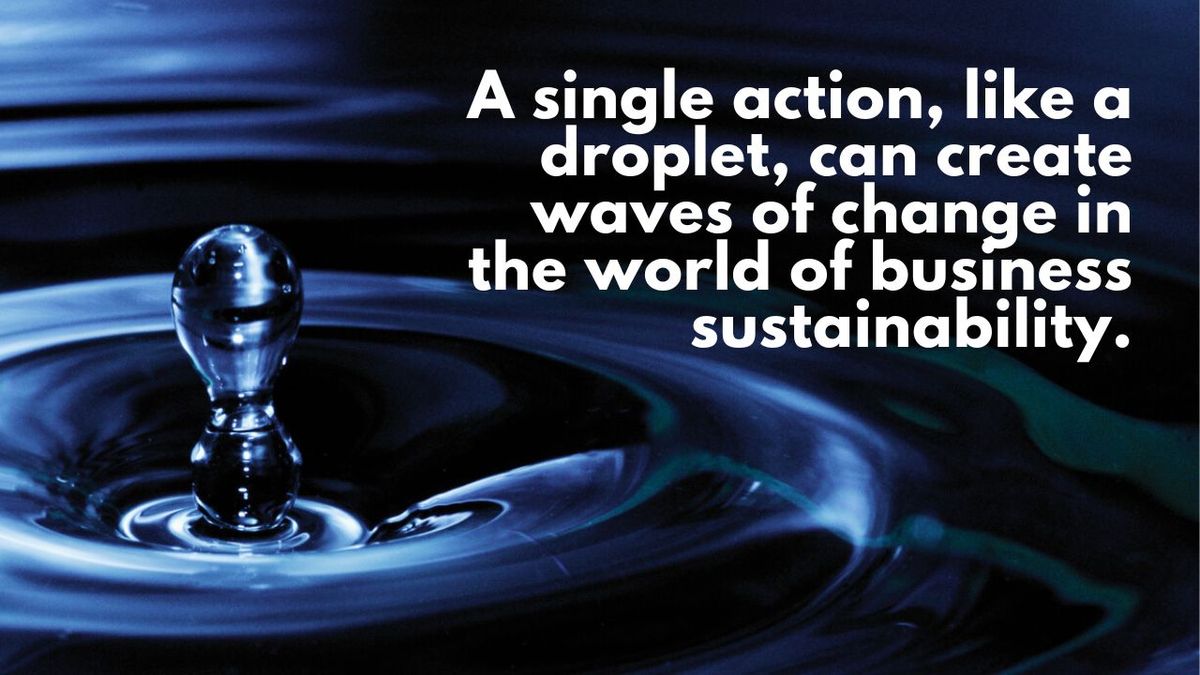From a Single Drop to Waves of Change: The Business Ripple Effect Explained
Explore the transformative 'Ripple Effect' in business sustainability. Discover how a single corporate action, like a droplet, can create cascading impacts, reshaping entire supply chains. Dive into the power of collaboration, risks, and the path to a greener future.

In the vast expanse of corporate sustainability, the 'ripple effect' stands out as a transformative concept. Much like a droplet causing ripples in water, a single corporate action can influence an entire system. This article delves into how businesses, particularly those setting sustainability benchmarks, create cascading impacts throughout their supply chains.
Understanding the Ripple Effect
The 'ripple effect' signifies the cascading influence of actions in the corporate world. Pioneering companies, such as AstraZeneca and Philips, are not just setting benchmarks but are initiating waves of change that reverberate throughout their supply chains. These ripples are reshaping the climate landscape, emphasizing the broader impact of supply chains beyond just direct operations.
Collaboration: The Catalyst for Change
The pharmaceutical sector, renowned for its groundbreaking medications and treatments, is championing the ripple effect. The Health Systems Task Force, a coalition of pharmaceutical titans including AstraZeneca, is not only setting ambitious sustainability targets for their suppliers but is also fostering a collaborative spirit. This united front sends a resounding message to the broader industry, propelling innovation and establishing new benchmarks.
The Risks of Ignoring the Ripple Effect
While the benefits of embracing the ripple effect in sustainability are evident, the risks of ignoring it are equally significant. Companies that overlook the cascading impacts of their actions risk not only reputational damage but also potential financial repercussions. In today's interconnected world, consumers and stakeholders are increasingly aware and demand transparency and responsibility from businesses. Ignoring the ripple effect can lead to missed opportunities in innovation, reduced competitive advantage, and potential regulatory challenges. Moreover, as industries move towards a more sustainable future, companies that lag behind may find themselves outpaced by competitors who have proactively adapted to the changing landscape. In essence, failing to recognize and act upon the ripple effect can jeopardize a company's long-term viability and success.
Key Steps to Accelerate Supply Chain Climate Action
- Leverage Buying Power for Transparency: Top-tier companies are demanding environmental disclosures from their suppliers, a pivotal step for managing Scope 3 emissions.
- Set Clear Expectations with Suppliers: Beyond data collection, companies are crystallizing expectations for emissions reduction, ensuring suppliers are proactive in the decarbonization journey.
- Cascade Science-Based Targets: Leading corporations are spurring their suppliers to adopt these targets, synchronizing with global objectives to curtail warming.
- Join Forces for Greater Impact: Collaboration is the key. By uniting, companies can motivate suppliers to set their own audacious targets, amplifying the ripple effect.
Conclusion
The ripple effect, as illustrated by the cascading influence of actions, is paramount when discussing the rollout of science-based targets (SBTs) across supply chains. By establishing ambitious targets, engaging suppliers, and leveraging collaborations, companies are charting the course for a sustainable future. The Health Systems Task Force's initiative underscores the transformative power of the ripple effect, setting a gold standard for peers to emulate and offering a beacon of hope for a greener tomorrow.




Comments ()